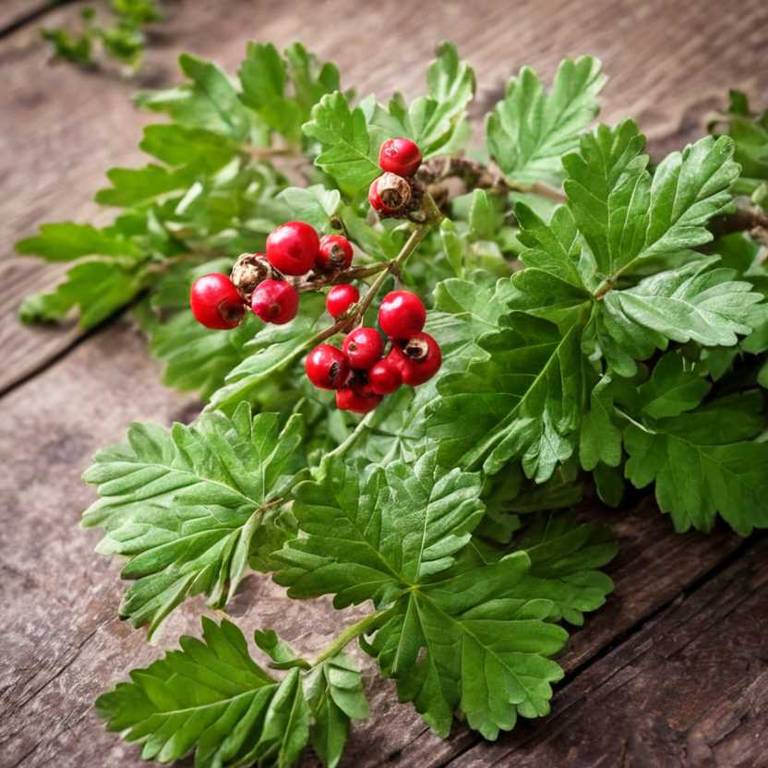By Leen Randell
Updated: Jul 21, 2024
10 Medicinal Constituents Of Crataegus Oxyacantha (Hawthorn)

Crataegus oxyacantha has active constituents such as flavonoids, oligomeric proanthocyanidins (OPCs), and triterpenic acids.
These compounds have vasodilatory and antioxidant properties, which can help improve cardiovascular health by reducing blood pressure and cholesterol levels. The OPCs in hawthorn can also enhance cardiac function and reduce symptoms of angina and heart failure.
By promoting heart health, hawthorn can improve quality of life for individuals with cardiovascular conditions, enabling them to lead more active and healthy lives.
This article explains in details the 10 best active constituents of Crataegus oxyacantha .
1. Quercetin
Crataegus oxyacantha quercetin is a flavonoid compound that has been identified in the fruit and flowers of this plant.
This bioactive molecule has been shown to possess numerous health benefits, including antioxidant, anti-inflammatory, and cardio-protective properties.
Studies have demonstrated its ability to lower blood pressure, improve lipid profiles, and reduce cardiovascular risk factors, making it a promising natural compound for the prevention and treatment of various cardiovascular diseases.
2. Kaempferol
Crataegus oxyacantha kaempferol is a flavonoid glycoside found in its leaves and fruits.
This bioactive compound has been extensively studied for its potential health benefits, including improving cardiovascular health by reducing inflammation, regulating blood pressure, and preventing oxidative stress. Kaempferol has also been shown to possess antioxidant, anti-inflammatory, and antimicrobial properties, making it a promising natural remedy for various diseases.
Its presence in hawthorn extracts highlights the importance of traditional medicine in discovering new therapeutic agents.
3. Ellagic acid
Crataegus oxyacantha ellagic acid is a polyphenolic compound found in its fruits.
It has been extensively studied for its potential health benefits, including antioxidant and anti-inflammatory properties. Ellagic acid has been shown to have antimutagenic and anticarcinogenic effects, potentially protecting against certain types of cancer.
Additionally, it may also help to reduce cardiovascular risk factors by inhibiting LDL cholesterol oxidation and platelet aggregation.
4. Chlorogenic acid
Crataegus oxyacantha chlorogenic acid is a phenolic compound found in the fruit of this plant species.
It has been studied for its potential health benefits, including antioxidant and anti-inflammatory properties. Chlorogenic acid has been shown to have an inhibitory effect on platelet aggregation, which may help prevent cardiovascular diseases.
Additionally, it has been reported to exhibit antimicrobial activity against certain bacteria and fungi.
5. Flavonoids
Crataegus oxyacantha flavonoids is a group of bioactive compounds found in its berries and leaves.
These flavonoids, including quercetin, kaempferol, and epicatechin, possess antioxidant, anti-inflammatory, and cardioprotective properties. They have been shown to improve cardiovascular health by reducing blood pressure, cholesterol levels, and oxidative stress.
Flavonoids from Crataegus oxyacantha may also exhibit anti-cancer and antimicrobial activities, making it a potential therapeutic agent for various diseases.
6. Gallic acid
Crataegus oxyacantha gallic acid is a bioflavonoid compound found in its leaves, flowers, and fruits.
It is a potent antioxidant that has been traditionally used to treat cardiovascular disorders, including high blood pressure and atherosclerosis.
Gallic acid has been shown to have anti-inflammatory properties, which may contribute to its ability to improve lipid metabolism and reduce the risk of heart disease.
7. Caffeoylquinic acid
Crataegus oxyacantha caffeoylquinic acid is a bioactive compound extracted from the fruit of this plant.
It has been traditionally used in herbal medicine to treat cardiovascular and metabolic disorders. Caffeoylquinic acid exhibits antioxidant, anti-inflammatory, and vasodilatory properties, which may contribute to its therapeutic effects on blood pressure, lipid metabolism, and platelet aggregation.
Its potential benefits also extend to the prevention of age-related diseases, such as Alzheimer's and Parkinson's.
8. Luteolin
Crataegus oxyacantha luteolin is a flavonoid compound that is present in the plant's fruit and leaves.
It has been traditionally used to treat cardiovascular diseases due to its potential to lower cholesterol levels and blood pressure.
Luteolin has been shown to have anti-inflammatory and antioxidant properties, which may contribute to its protective effects on the heart and cardiovascular system.
9. Apigenin
Crataegus oxyacantha apigenin is a flavonoid compound that has been isolated from its berries.
It exhibits antioxidant and anti-inflammatory properties, which may contribute to the fruit's traditional use in treating cardiovascular disease.
Apigenin has also been shown to have potential therapeutic effects on the heart and blood vessels, including lowering blood pressure and improving lipid profiles.
10. Rutin
Crataegus oxyacantha rutin is a bioflavonoid compound that is extracted from its fruits, leaves, and flowers.
It is a powerful antioxidant with various health benefits, including improving cardiovascular health, reducing inflammation, and enhancing capillary strength. Rutin has been traditionally used to treat conditions such as varicose veins, hemorrhoids, and rosacea.
Its anticoagulant properties also make it useful in preventing blood clots and strokes.